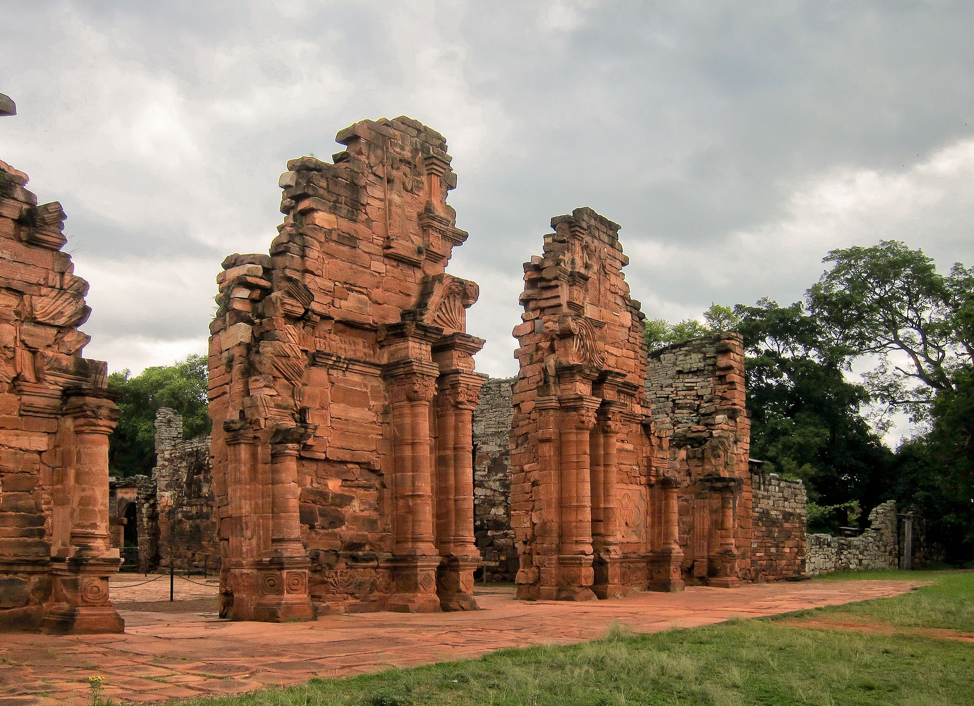
The Jesuit Reductions in Argentina, Brazil, and Paraguay were established in the 17th century. The picture, shows the ruins of San Ignacio Mini, founded in 1610 by Jesuit missionaries. This group of Christian missionaries in South America were spread throughout Argentina, Brazil, and Paraguay. They set up systems of government, taxation, and evangelization of the indigenous communities in the surrounding areas. Their conversion tactics differed however from other reductions by the Spanish and Portuguese empires in that they, “aimed to convert Indian tribes into Christianity but not necessarily into European culture” (Jesuit Reductions in Argentina). Jesuits during this time are practicing a form of “benign colonialism”, which implies that the indigenous populations gained more from these Jesuits than risks.
The Spanish and Portuguese however built reductions of their own to exploit the indigenous communities for labor (Jesuit Reduction). This made Jesuit reductions more appealing to indigenous peoples because the Jesuits were trying to create an autonomous state within the Spanish and Portuguese controlled areas. This meant that native could receive protection from enslavement from the two empires as long as they followed the rules of the Jesuits which were focused on Christianity rather than colonization and exploitation (Jesuit Reduction).
Sources:
“Jesuit Reduction.” Wikipedia. Wikimedia Foundation, April 5, 2020. https://en.wikipedia.org/wiki/Jesuit_reduction.
Admin. “Jesuit Reductions in Argentina.” VisitArgentina.net, January 27, 2020. https://www.visitargentina.net/argentina-guide/jesuit-reductions-argentina.html
